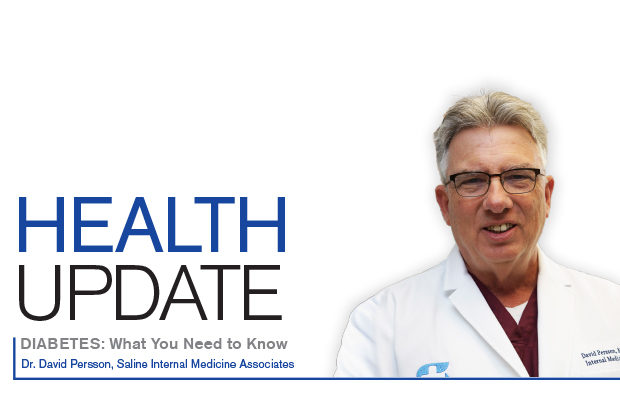DIABETES: What You Need to Know

Diabetes is a chronic health condition that impacts how your body turns food into energy and causes blood sugar levels to rise to abnormally high levels.
As the seventh leading cause of death, diabetes is one of the most common—and dangerous—health issues in the United States. In fact, more than 37 million Americans have diabetes, and one in five of them is unaware he has it.
The three types of diabetes
There are three main types of diabetes: type 1, type 2, and gestational.
Type 1 diabetes results when your body stops producing insulin entirely. Insulin is a hormone that helps your body turn food into energy and manages your blood sugar. Symptoms for type 1 typically develop early and intensely, and this type is primarily diagnosed in children, teens, and young adults. Those with type 1 take insulin regularly to compensate for their body’s inability to produce it.
Type 2 diabetes is the most common iteration of the disease. It occurs when your body has difficulty maintaining normal blood sugar levels as a result of an inability to use insulin properly. Type 2 diabetes can come about as a result of risk factors like unhealthy weight, age, a family history of type 2 diabetes, a personal history of gestational diabetes, and ancestry of certain ethnicities that are at higher risk, including African American, Hispanic/Latinx, American Indian, and Alaska Native (some Pacific Islanders and Asian-Americans are also at higher risk).
Gestational diabetes occurs only in females and results when pregnancy-related changes affect the body’s ability to make enough insulin. It typically goes away after birth but can increase the mother’s and the child’s risk for type 2 diabetes later in life.
A fourth, related condition is prediabetes. Prediabetes presents when blood sugar levels are high but not high enough to be diagnosed with type 2 diabetes. More than one in three American adults—around 96 million—has prediabetes, and more than 80 percent don’t know it.
Diabetes can also lead to other, more serious health issues, like heart and kidney disease, vision loss, and stroke. The good news is that both type 2 and gestational diabetes can be prevented. Eating healthy, engaging in regular physical activity, and maintaining a healthy weight can help.
Do I have diabetes?
While diabetes can present with many different symptoms including frequent urination, increased hunger and thirst, unintended weight loss, blurry vision, fatigue, abnormally dry skin, numb or tingling hands or feet, slow-healing sores and more infections than usual, you may not have any symptoms at all.
It’s important to talk to your primary care provider about your risk factors and ask about getting tested. A simple blood sugar test can determine whether you have diabetes or prediabetes. Learning your status can empower you and your provider to work together on a treatment plan and lifestyle changes to improve and protect your health, if needed.
For more information on diabetes, visit www.cdc.gov/diabetes and www.diabetes.org.









0 comments